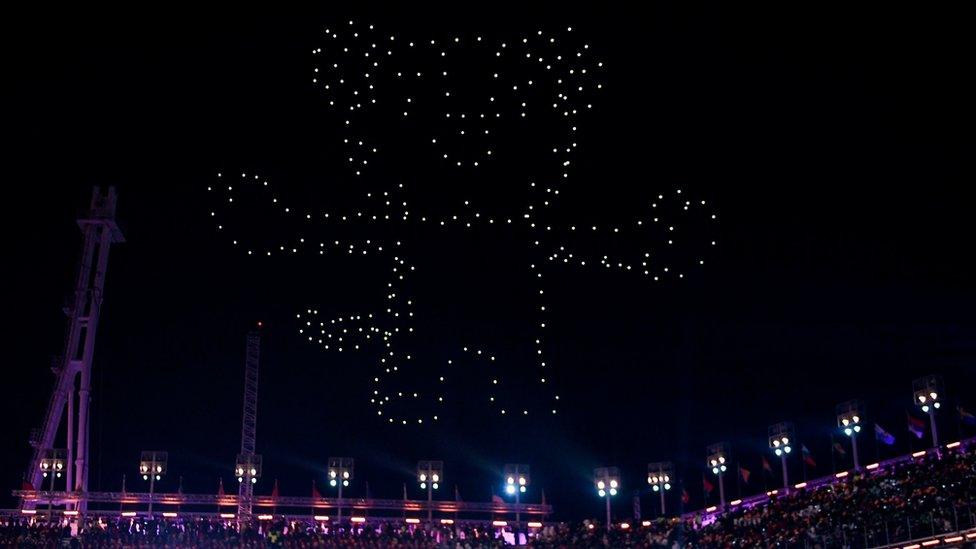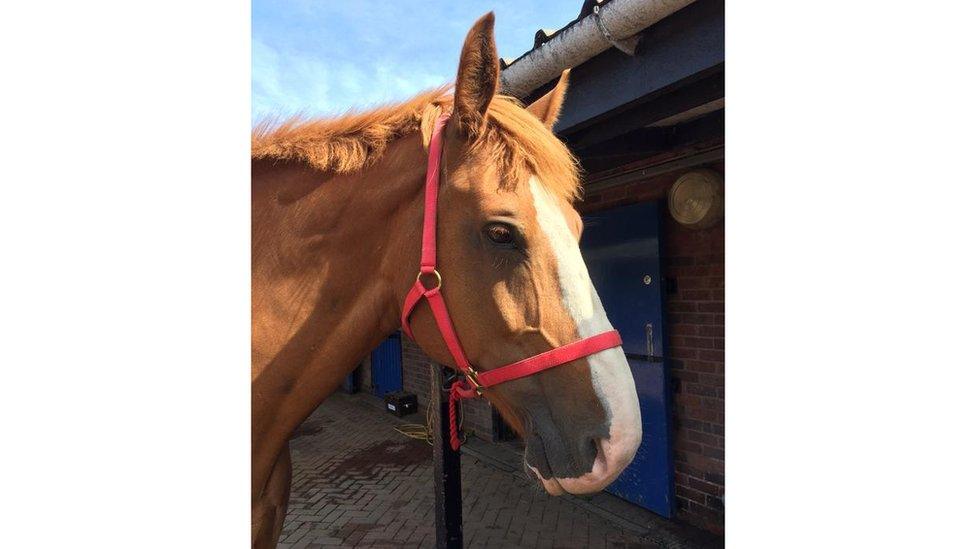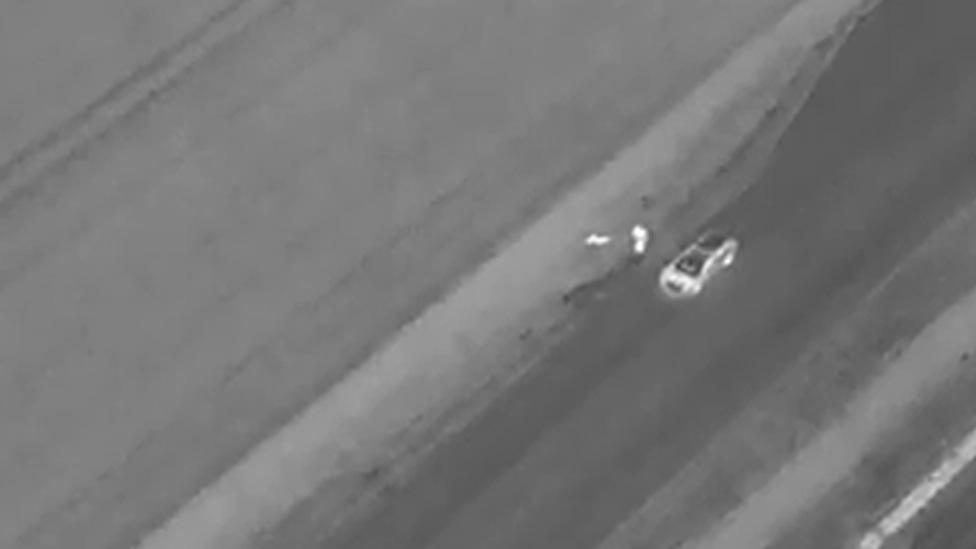Could drones replace fireworks in the UK?
- Published
This video has been removed for rights reasons
The Winter Olympics in Pyeongchang came to a spectacular close on Sunday - but in addition to the usual fireworks finish, there was an added technique that prompted gasps from the audience.
Organisers used an army of drones covered in LED lights to make patterns to illuminate the South Korean sky with illusions of the Olympic rings, patterns of Soohorang - the white tiger mascot - and figures of competitors.
But could this technology spread across the globe and takeover from our more traditional whizz bang fireworks?
The internet reaction to the drones was overwhelmingly positive.

Allow X content?
This article contains content provided by X. We ask for your permission before anything is loaded, as they may be using cookies and other technologies. You may want to read X’s cookie policy, external and privacy policy, external before accepting. To view this content choose ‘accept and continue’.
Allow X content?
This article contains content provided by X. We ask for your permission before anything is loaded, as they may be using cookies and other technologies. You may want to read X’s cookie policy, external and privacy policy, external before accepting. To view this content choose ‘accept and continue’.
Allow X content?
This article contains content provided by X. We ask for your permission before anything is loaded, as they may be using cookies and other technologies. You may want to read X’s cookie policy, external and privacy policy, external before accepting. To view this content choose ‘accept and continue’.

Technology behind the show
The displays were created by technology firm Intel's Shooting Star drones. Weighing just 280g (9.8oz) they are equipped with built-in LED lights that can create more than four billion colour combinations.
The company says a single operator can control hundreds of drones at one time to create images in the sky.
The closing ceremony used 300 drones at once, but before the opening ceremony, Intel pre-recorded a display that broke world records - using 1,218 drones at once.
Anil Nandhuri, the general manager of the drone group at Intel, said not only were drones a better creative option, they were also better for the environment.
"Fireworks create a lot of pollution and noise," he said. "We all enjoy fireworks, but that has been the only way you could enjoy something in the sky other than being in Norway and looking at the Northern Lights.
"What you're seeing in the Shooting Star system is the ability for you to create that story.
"You can create shapes, logos or animations and turn it into a story and that is a new form - you can now paint in the sky, but without the pollution. It's reusable and it's safe."

Soohorang - the Olympic white tiger mascot - lit up the sky at the closing ceremony
Kinder to animals?
The RSPCA has long campaigned for more rules around traditional fireworks and the harm they cause animals.
The charity estimates that 45% of dogs in the UK show signs of fear when they hear them go off
A spokeswoman said farm animals can be "easily frightened by loud noises and sudden flashes of bright light, which can startle them and cause them to injure themselves".
"Also wildlife can be frightened and burnt after making their home in bonfires," she added.
But while the RSPCA said drones could be a "possible idea" to reduce the impact on animals, they may not be the perfect answer.
"Drones are not without their own negative issues such as spooking horses and livestock or colliding with birds, and can cause disturbance to animals and members of the public," the spokeswoman added.
Police believe the death of a 14-year-old police horse called Fimber in October 2015 may have been linked to a drone.

Police believe Fimber may have been spooked by a drone before his death
CCTV showed the horse reacting to something nearby, causing him to vault a fence and collide with a wooden post.
The serious injury led to his death, while officers say they found a drone nearby.
"It's therefore important for their effects to be fully considered and measures taken to minimise the chance of accidents," the RSPCA spokeswoman said.
Would UK law allow it?
A number of laws are in place in the UK when it comes to the operation of drones, which could hamper displays in the country.
Firstly, whether a drone has its flight path programmed or not, it needs to have a person in control of it, in case anything goes wrong.
Although Intel says its models can be controlled by a single operator, it may not always be the case, and in displays where hundreds of machines can head into the air, this could be difficult.
Drone operators must also have their devices in plain sight, which the Civil Aviation Authority (CAA) says is around 400ft in daylight.
For night-time displays, this line of sight would be shortened and could again increase the challenge.
Organisers close to airports - within 10 miles (16km) - would also have to inform the CAA so they can warn the aviation industry, as the lights could be distracting for pilots.
This is the same from fireworks, which go much higher - up to 1,500ft.
Despite these hurdles, a spokesman from the CAA said: "It wouldn't be impossible in the UK, but we would clearly have to be closely involved."
The technology and the motivation may both be there when it comes to drones offering an alternative to the traditional firework display.
But it is early days, and with regulations and safety concerns to take into account, it may yet be sometime before Guy Fawkes night sees the sky buzzing with drones.
- Published25 February 2018

- Published9 January 2018